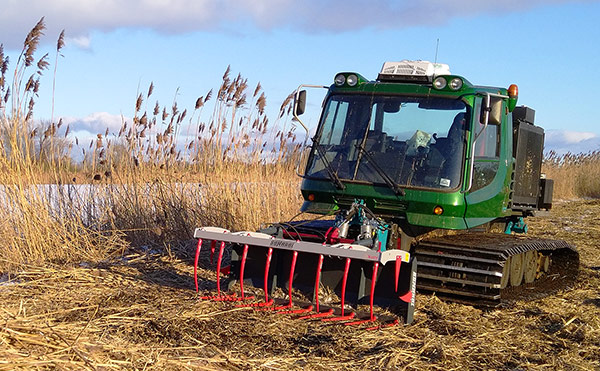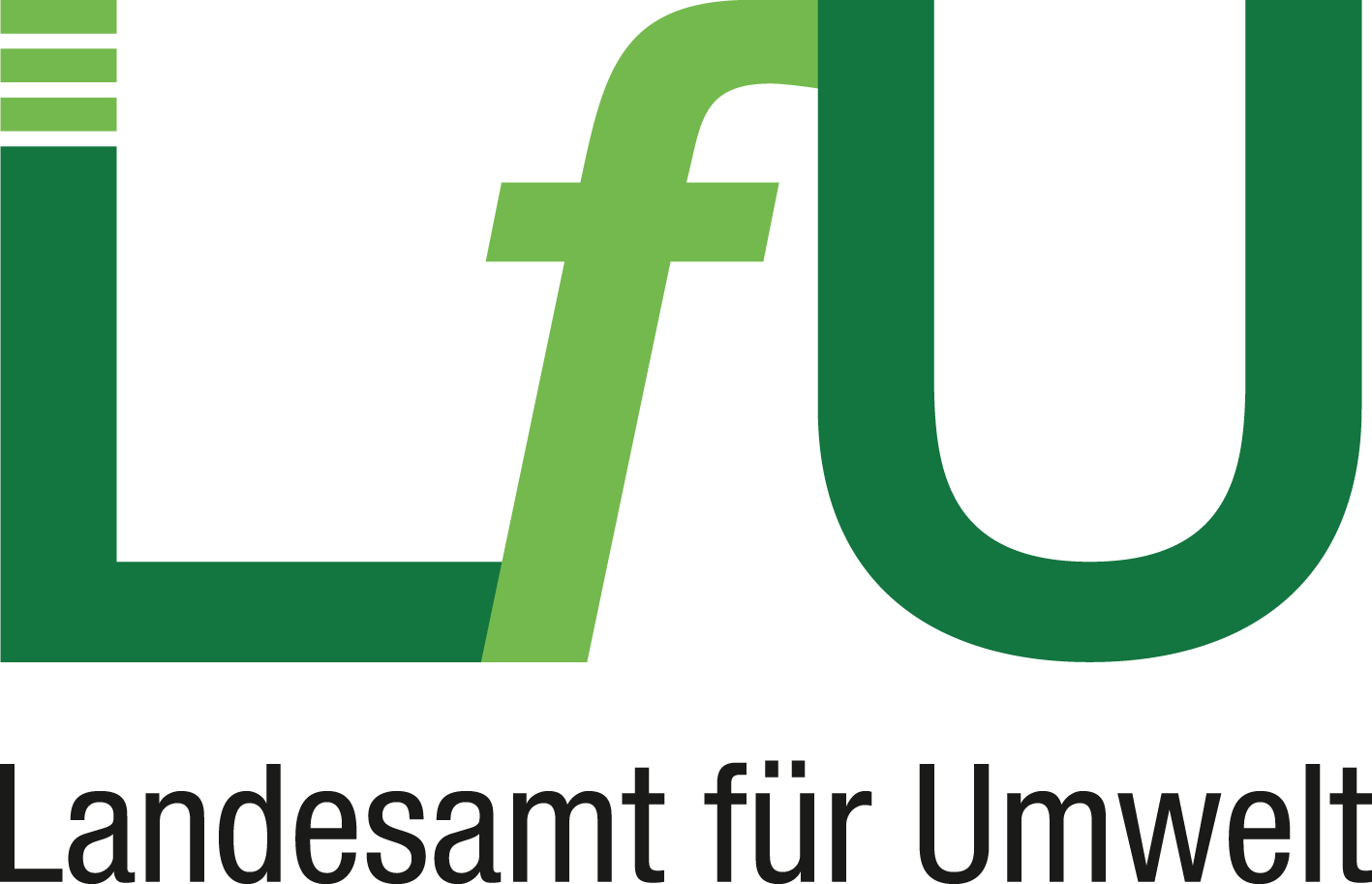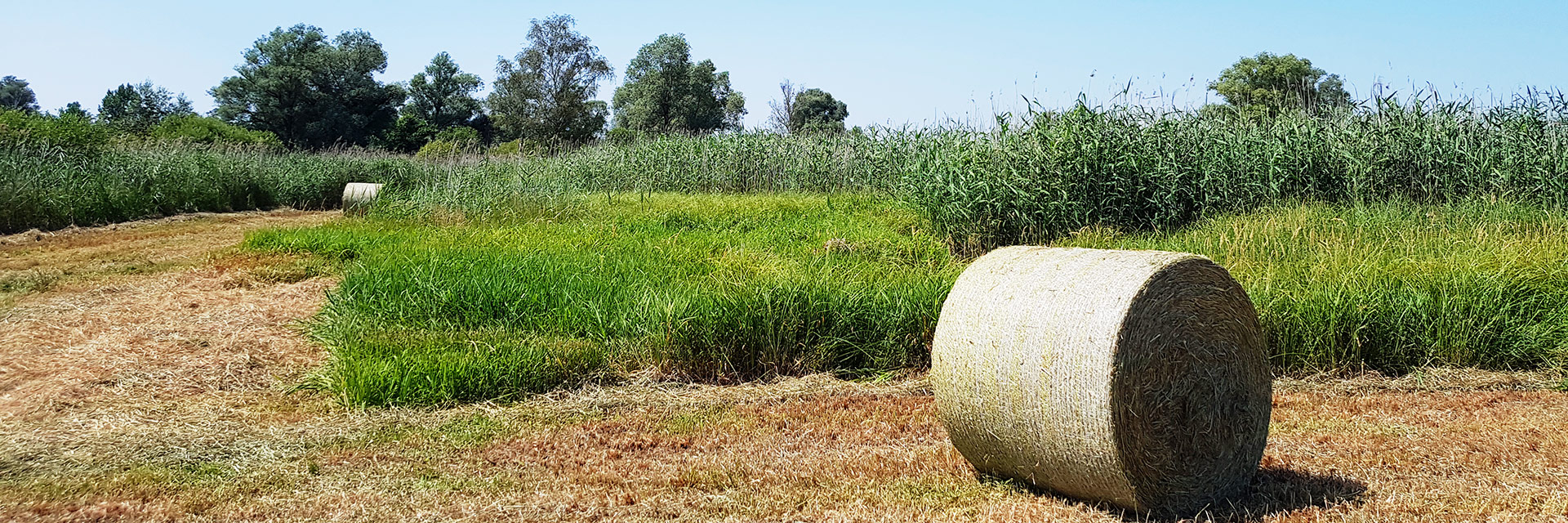Motivation
HOW TO PROTECT THE CLIMATE WITH PEATLANDS – SECURING RESOURCES IN PEATLANDS
Climate protection is a major challenge worldwide for our and for future generations. In the long term, this involves nothing less than the preservation of the performance and functional capacity of natural ecosystems, including the regenerative capacity and sustainable use capacity of natural assets as well as biological diversity (fulfilment of the Biodiversity Convention), and thus the safeguarding of living conditions for humankind. The short and medium-term goals were made binding in the United Nations Framework Convention on Climate Change (UNFCCC) at the UN Climate Change Conference in Paris in 2015.
Peatlands are of outstanding importance in terms of climate protection due to their ability to store greenhouse gases that are damaging for the environment. And this relates to Brandenburg in a special way nationwide, as it is very rich in peatland. Currently, however, more than 200,000 hectares of organic soils (“peatland and peatland succession soils”) are being used economically in a way that has a lasting impact on these soils, releasing around 6.2 million tonnes of CO2 equivalents per year as well as nutrients that were previously retained. The transition to low-impact management at a minimum by 2030 and to climate-neutral management by 2050 is therefore fundamental within the framework of the German Climate Action Plan 2050. The goal is to reduce emissions from German peatlands from the current 44 million by 5 million tonnes of CO2 equivalents / year by 2030, in accordance with the Federal and State target agreement on peatland protection. That is a reduction of around 11.4 percent. This requires raising the water level for about 50,000 hectares of peatland in Brandenburg to a ground level proximity. A challenging task. More …
Projects
LOCATION OF THE PROJECT AREAS
Climate protection has shown great dynamism in recent years, unlike any other cross-cutting issue we currently face. Meanwhile, its resulting implementation has also been met with great approval among broad sections of the Brandenburg population.
Germany has adopted its Climate Action Plan 2050 in accordance with its obligations under international agreements. As a result, the state of Brandenburg launched, alongside other initiatives, the project designated the “Climate protection and climate impact adaptation through peatland-friendly reservoirs and water management relating to peatland areas in the state of Brandenburg and its catchment areas“. The goal of the project is to demonstrate, through initial positive examples, how it is possible to use our peatlands in the future without the negative side effects of: drainage; lowering of groundwater; peatland shrinkage and subsidence; mineralisation of organic soils; nutrient leaching; impoverishment of biodiversity; and landscape desiccation – all without the release of harmful greenhouse gases. More …
Team
EIGHT PARTNERS IN CLIMATE PROTECTION – THE ARGE KLIMAMOOR
More information on the individual project partners is available on their respective websites:
www.nagolare.de
teamferox.de
www.hydro-consult.de
www.ihu-stendal.de
www.wbl-potsdam.de
www.atb-potsdam.de
www.duene-greifswald.de
Contact the Arge Klimamoor
by e-mail at
kontakt@klimamoor-brandenburg.de
and by telephone at
03 56 07 – 74 87 07
A task as complex as the transition to sustainable management in Brandenburg’s peatlands requires broad professional knowledge and know-how. That is why eight partners have joined forces in the Arge Klimamoor. Jänschwalde-based Nagola Re GmbH and team ferox GmbH from Dresden are responsible for the overall coordination of the project designated the “Climate protection and climate impact adaptation through peatland-friendly reservoirs and water management relating to peatland areas in the state of Brandenburg and its catchment areas” in the state of Brandenburg. Nagola Re’s work is focusing on vegetation and fauna surveys, nature conservation planning and monitoring of the climate marsh sites, as well as mediation and communication with owners and users, while team ferox not only deals with nature conservation issues but also accompanies the process management for the implementation of the individual projects. More …
Usage

MANAGEMENT AND UTILISATION
Peatlands have been used by humans in various ways over many centuries. In particular, large low-lying peatland complexes were drained and cultivated for agricultural use by regulating water levels. Initially, water levels were lowered only slightly in the summer months, but later – especially after 1945 – they were lowered significantly throughout the year. The overarching aim was to increase the use of heavier machinery and to transform the vegetation. This form of management led to permanent peatland soil loss, mineralisation and an enormous release of “greenhouse gases” previously bound in the soil, especially CO2 equivalents. It also often resulted in an irreversible change in soil structure, which in turn affected the peatland’s capacity for agricultural use. In the course of peatland subsidence, this may often result in waterlogging problems, which force a constant deepening of the drainage capacity (negative spiral). As a result, the increasingly extensive drainage measures may also lead to large-scale water scarcity, beyond the peatlands. More …
News
PRESS, EVENTS, PUBLICATIONS
This section provides you with regular information on event dates, press coverage and new publications. More …
Notes
ANSWERS TO FREQUENTLY ASKED QUESTIONS
We are often asked the same questions about project-related content. This section provides answers to general questions about land ownership, land and water management, nature conservation and environmental protection, subsidies and support, and long-term perspectives. More …
The project is funded by the Ministry of Agriculture, Environment and Climate Protection.
The client is the State Office for the Environment


